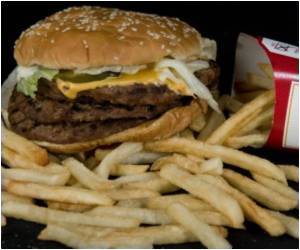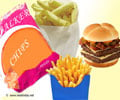A new study finds ads from fast food giants at depicting healthier kids’ meals frequently go unnoticed by children ages 3 to 7 years.

Other children admitted being confused by the depiction, as with one child who pointed to the product and said, “And I see some…are those apples slices?”
Advertisement
“Burger King’s depiction of apple slices as ‘Fresh Apple Fries’ was misleading to children in the target age range,” said principal investigator James Sargent, MD, co-director Cancer Control Research Program at Norris Cotton Cancer Center. “The advertisement would be deceptive by industry standards, yet their self-regulation bodies took no action to address the misleading depiction.”
In 2010 McDonald’s and Burger King began to advertise apples and milk in kids meals. Sargent and his colleagues studied fast food television ads aimed at children from July 2010 through June 2011. In this study researchers extracted “freeze frames” of Kids Meals shown in TV ads that appeared on Cartoon Network, Nickelodeon, and other children’s cable networks.
Of the four healthy food depictions studied, only McDonald’s presentation of apple slices was recognized as an apple product by a large majority of the target audience, regardless of age. Researchers found that the other three presentations represented poor communication. This study follows an earlier investigation conducted by Sargent and his colleagues, which found that McDonald’s and Burger King children’s advertising emphasized giveaways like toys or box office movie tie-ins to develop children’s brand awareness for fast food chains, despite self-imposed guidelines that discourage the practice.
Advertisement
“The fast food industry spends somewhere between $100 to 200 million dollars a year on advertising to children, ads that aim to develop brand awareness and preferences in children who can’t even read or write, much less think critically about what is being presented.” said Sargent. This study was funded by the Robert Wood Johnson Foundation's Healthy Eating Research program.
Advertisement















